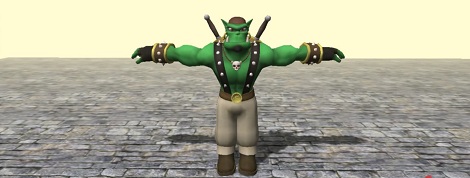
Nearly everyone has heard of phantom limb syndrome. It occurs sometimes after a limb is amputated, but the mind of the patient still thinks that the limb is attached. Generally regarded as a mix-up in the wiring of the damaged nerves, a phantom limb can be very painful. [Ben] has been working on a way to alleviate some of the pain and frustration associated with a phantom limb and fortunately for us he went for a Kinect, VR goggles, and gyroscope build.
Today, most therapies for phantom limb syndrome use a Ramachandran Mirror Box. The theory behind the mirror box is pretty simple – if someone recently lost a hand, just insert one hand in one side of the box and the arm stump on the other side. Looking into the box from the side with the good hand will trick the patient’s brain into thinking the amputated hand is still there. It’s a good therapy that has been very successful, but [Ben] thought he could do something that is a little more immersive.
[Ben]’s project uses a Kinect and VR goggles to put the patient in a virtual environment. With the help of a few gyroscopes, the patient gets a virtual representation of their whole self projected into their goggles. The technique isn’t terribly different from VR phobia treatment, although there’s much more electronics and math involved in [Ben]’s build. The first test subject said his pain was going down, so it looks like he might have a success on his hand (no pun intended).
Check out the demos of [Ben]’s treatment plan after the break.
[vimeo=36085689]





“it looks like he might have a success on his hand (no pun intended).” – What a messed up joke…
technically ‘on his hands’ might be ‘no pun intended’ but written as ‘on his hand’ the pun certainly is intended.
Great hack though and goes to show what can be accomplished when hardware is used outside it’s intended purpose.
One of the things about VR phobia treatment that I find most amazing is that many, many studies have shown it be every bit as effective as traditional exposure therapy. Basically the part of your brain that handles conditioned fear responses doesn’t give a shit what you rationally know to be true, so knowing “this isn’t real” doesn’t make a damn bit of difference.
Give this, it surprises me not at all that there are other psychiatric/neurological/whatever issues that can be treated via VR. Thrilled, yes, excited, definitely, but not surprised.
hah i know this guy, good to see his work here. I wouldnt have started messing with the kinect if it wasnt for ben!
Given that an amputees brain can be fooled into thinking it has a VR hand then surely a prosthetic limb is much more effective as a treatment? Or does the fitting of a fake limb negate the therapeutic effect?
The purpose is to allow them to move the missing limb to get it out of painful or uncomfortable positions. The mirror box and VR environment allow the user to clap and do other symmetric movements, which seems to work. I suppose a prosthetic limb could do it too, but it seems to me that it would be more complex.